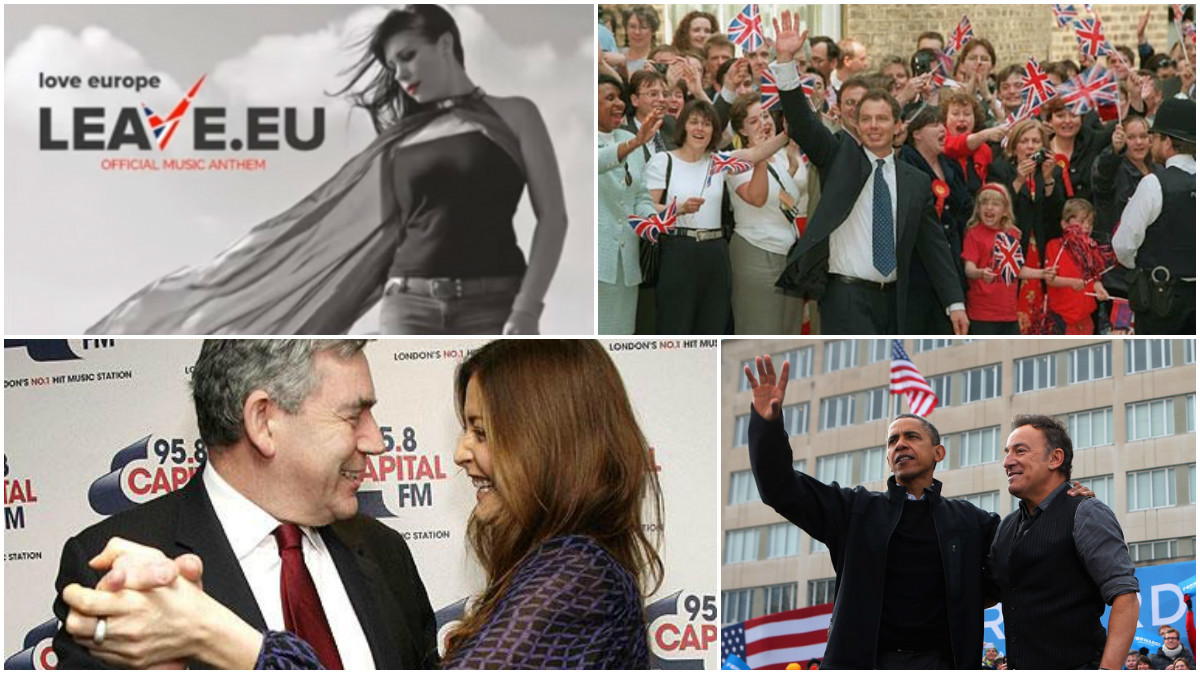
ONE of the groups campaigning for the UK to leave the EU has picked its campaign anthem.
Leave.EU have gone for a version of Carly Simon’s Oscar winning song Let The River Run.
Nothing to do with the film that it came from Working Girl, instead it’s for the stirring lyrics about dreamers waking the nation and the “new Jerusalem”
It’s not know what singer songwriter Simon thinks of her tune being used for political ends but it’s only the latest in a long line of meetings of pop and politics, with mixed results.
Perhaps the most famous song to be used for political ends was Things Can Only Get Better, adopted by Tony Blair’s New Labour in 1997.
The election result proved that Britain was ready for change after 18 years of Conservative rule and the song summed up the idea that the Tories had run out of steam and ideas.
It had been number one three years previously for the band D:Ream and adopting such a recent chart hit added weight to the idea that Tony Blair represented a new generation of politician.
Peter Cunnah, the man behind D:Ream has admitted mixed feelings about his hit being so closely associated with the New Labour project since.
Pop trivia fans will know that keyboard player in D:Ream was Brian Cox now an eminent physicist and professor who can be seen on TV this month presenting Stargazing Live.
US presidential hopefuls keep returning to Bruce Springsteen’s Born in the USA.
It’s a rousing anthem with a chorus that mentions the country they hope to lead but even a cursory listen to the lyrics reveals it’s actually a sarcastic snipe at the myth of the American dream sung from the point of view of a Vietnam veteran.
That didn’t stop Ronald Reagan trying to adopt it as his campaign anthem until left-leaning Springsteen put the kibosh on it.
And later on both Bob Dole and Pat Buchanan would try take the song for their failed campaigns.
It was regarded as typical of the poor presentation style of Gordon Brown that just before he took the stage at the 2008 Labour party conference the PA blared out Sit Down, a song by indie band James.
As well as exhorting people to sit down rather than stand up to greet the PM it includes lyrics calling on “those who find themselves touched by madness” and “those who find themselves ridiculous” to join in.
And to top it all off singer Tim Booth complained about the party using his song to boot.
Gordon Brown blundered again when he apparently claimed to be a fan of the Arctic Monkeys back in 2006 when he said it’s what woke him up in the morning.
They were all the rage then and it looked like the notoriously uncool chancellor was trying to compete with neighbour Tony Blair in the trendiness stakes.
Asked to name his favourite Arctic Monkeys song Brown struggled and explained that what he meant was that it’s the sort of music that does wake you up rather than his preferred setting on the alarm clock.
End result was that Brown ended up looking even more awkward in the public’s eyes. Something that would later become a regular occurrence when he got into Number 10.
The original and perhaps best campaign song is Happy Days are Here Again, adopted by Franklin D Roosevelt for his 1932 White House run. It became the unofficial anthem of the Democratic Party in the USA for years afterwards.
Like Tony Blair decades later FDR adopted a recent hit to capture the mood that the nation was turning a corner.
The Great Depression was coming to an end but perhaps most pertinently the US was on the verge of abandoning prohibition and booze would be back on sale. Campaigners for that step changed the lyrics to “Happy days are beer again”!
Like our Facebook page or follow us on Twitter – @Sunday_Post

Enjoy the convenience of having The Sunday Post delivered as a digital ePaper straight to your smartphone, tablet or computer.
Subscribe for only £5.49 a month and enjoy all the benefits of the printed paper as a digital replica.
Subscribe